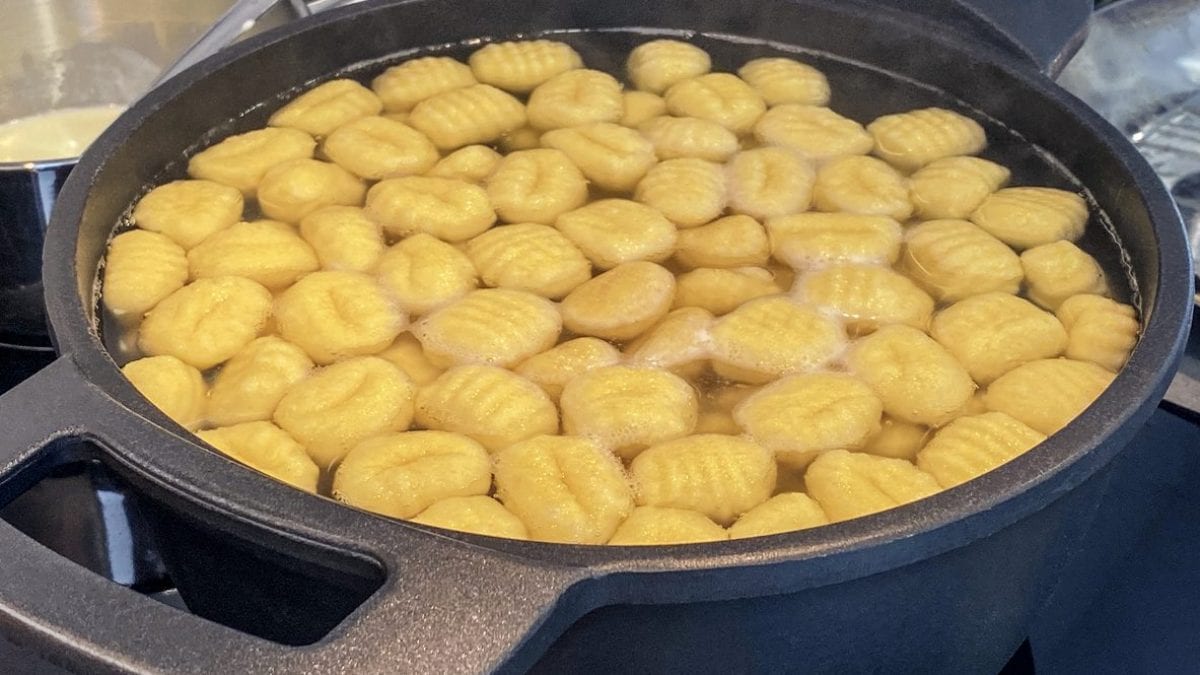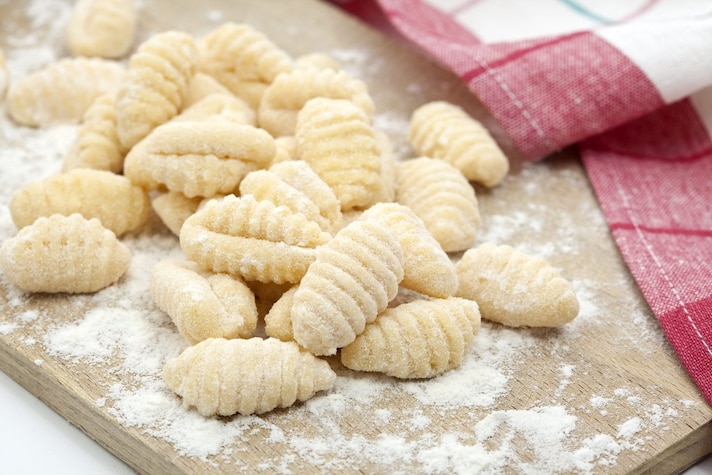
Tiny pieces of potato, flour, and water that delight the palates of both adults and children: gnocchi are a symbol of our cuisine and the star of many delicious recipes. Not only are they easy to make, but it's incredibly easy to tell when they're done because they let you know by floating to the surface. But have you ever wondered why this happens? It would be nice to think it's their way of telling you they want to get out of the water, but the reason, in reality, has to do with physics and chemistry.
Archimedes and Gelatinization
We don't want to bore you with a long and tedious explanation, but as you already know, cooking is also a science: and to explain why gnocchi float when cooked, we need to call on Archimedes for help. His principle states that a body immersed in a liquid floats if its density is lower than that of the liquid itself: what does this mean? It means that gnocchi have a lower density than water and therefore float. But let's take it one step at a time, because it's not that simple.
Initially, when raw, gnocchi have a higher density than the cooking water because, remember, the dough is made of flour, water, and potatoes and is therefore very compact. Once immersed in boiling water, between 140/60 and 175°F/80°C, the gelatinization process takes place: the starch contained in the dough begins to absorb water, swells, and traps small bubbles of air and steam. This process causes the gnocchi to increase in volume, making them less dense and lighter: in this way, we return to the situation we explained at the beginning, in which the gnocchi become less dense than the water and can finally rise to the surface.

One of the most interesting things to consider is that it is not the cooking itself that determines this floating: the cooking simply coincides with the time in which the starch gelatinization occurs, so I will know that when the process is finished, my gnocchi will be ready.
The Signal is Not Always Reliable
Trust is good, but mistrust is better, and this is true even for gnocchi. It can happen, in fact, that by the time the gnocchi rise to the surface, they are not completely cooked: for this reason, it is always a good idea to taste them to be sure. The size and shape of the individual gnocchi also play a role: the smaller they are, the less time it will take, while, conversely, the larger ones will need a few moments longer.
However, even if we want to leave them a few moments longer after they have floated to the surface, there is always a limit to respect: in fact, the amylose – the component that, together with amylopectin, forms starch – can slowly begin to dissolve, making the gnocchi fragile and watery.
;Resize,width=767;)
